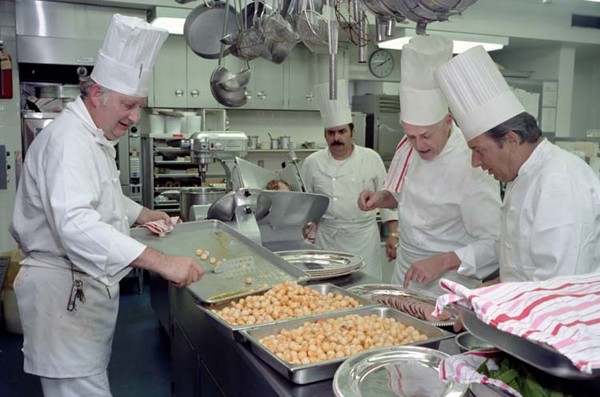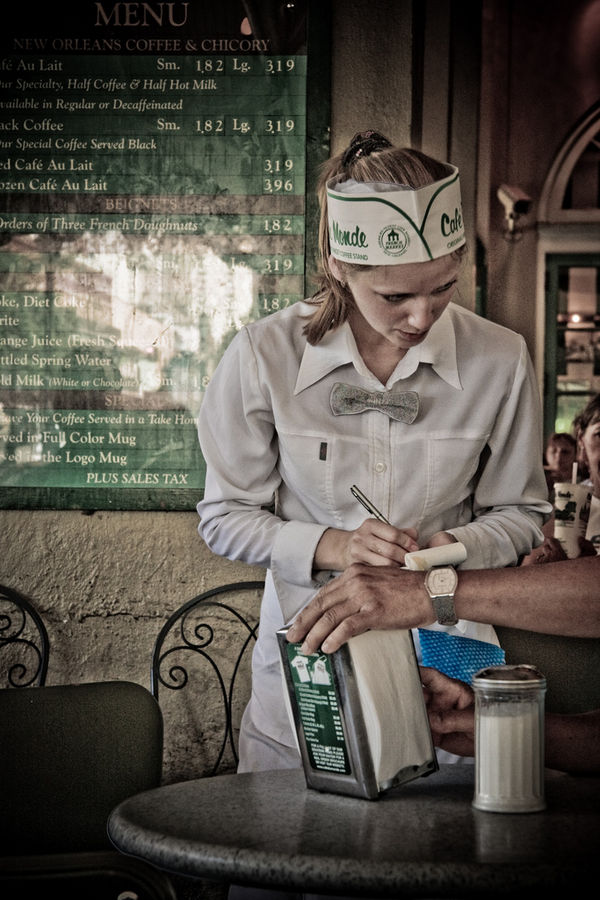Jun 24th 2016 - Guest
Choosing the right staff for your restaurant
If you've decided on opening a restaurant, especially if it's your first one, you will need to consider many things – the type of restaurant, its location and its size. If you have a vision of what you would like your restaurant to be likeand have already proceeded to make it a reality, sooner or later you'll have to think about staffing.
Having the right amount of staff in your restaurant is important for it to run smoothly – there's a balance between overstaffing and being short on staff, and of course it is best learned with experience. But being prepared for the experience can help you determine what you need when you're starting out and will also help you read signals about whether you need to increase or decrease your staff.
The type of your restaurant
Knowing exactly what type of restaurant you'll be opening is a prerequisite to determining what kind and what amount of staff you will need. A fine dining (for example, a gourmet restaurant) will require a long list of staff, some highly specialized, while casual dining (maybe a family restaurant) will require less, and a fast food place even fewer. A café or a pub are also possibilities, of course, though they are not restaurants, technically.
Furthermore, the type of food service which you will be offering is another factor in determining what staff you need. Examples of this are buffet or stations, deli, fine dining or more generally counter or
table services.
Then you also have to consider what type of food in particular you will be offering, as this will determine what kind of cook you might need and what kind of equipment.
Finally, the amount of tables and seats will also determine the number of waiters, bartenders and other personnel. If you're not really sure of all the types of personnel there can be in a restaurant, the 'Food Preparation and Serving Occupations' section of the Occupational Outlook Handbook by the BLS is a good place to start.
The amount and type of employees
Once you have considered all of the above factors, you will have at least a vague sense of where you stand with regards to the amount and types of employees. To further narrow this down, you will need to establish which positions in your restaurant are more critical than others – a fine dining restaurant will certainly require a head cook and a sous chef, maybe even a sommelier or an expediter.
If you feel overwhelmed having to figure out the amount and type of employees you need, as well as the anticipated payroll costs, you can try to break things down in smaller chunks.
One way of doing this is to consider your busiest times first – which days and which hours do you consider will be the busiest ones? Usually lunch and dinner are busier but that really depends on what you're aiming at with your restaurant. By having an approximate idea which times and days will be busiest, you will be able to estimate the maximum amount of workers you will need. From there you can start reducing the personnel load in your hypothetical schedule during other times and days of the week.
We have devised a small chart about all the possible employees which you could require in your restaurant, for you to consider.
| Position | Fine Dining | Casual Dining | Fast Food |
| General Manager | ✔ | ✔ | ✔ |
| Assistant General Manager | ✔ | ✔ | |
| Executive Chef | ✔ | ||
| Shift Manager | ✔ | ||
| Chef de Cuisine | ✔ | ||
| Sous Chef | ✔ | ||
| Chef Garde Manger/Chef de Froid | ✔ | ||
| Pantry/Prep Cook | ✔ | ✔ | |
| Sommelier | ✔ | ||
| Expediter or "Expo" | ✔ | ✔ | |
| Line Cook | ✔ | ✔ | |
| Cook | ✔ | ||
| Short Order Cook | ✔ | ||
| Pastry Chef | ✔ | ||
| Fast-Food Cook | ✔ | ||
| Barista | ✔ | ||
| Sandwich Maker | ✔ | ||
| Dishwasher | ✔ | ✔ | ✔ |
| Maitre D' | ✔ | ||
| Server | ✔ | ✔ | |
| Food Runner | ✔ | ✔ | |
| Bartender | ✔ | ✔ | |
| Hostess | ✔ | ✔ | |
| Busser | ✔ | ✔ | |
| Drive-thru Operator | ✔ | ||
| Order Taker | ✔ | ||
| Cashier | ✔ |

- White House photo office / Foter.com / Public Domain Mark 1.0
FTE, Guest chart and Master schedule
There's a number of other useful strategies to determine the amount of employees you will need, depending on the amount of time they will be working – assuming that they won't be working full-time. One of these approaches is the so-called 'full-time equivalent' (FTE) unit which is a way of measuring the amount of work which a person is doing with regards to the amount of a single person working full-time. For example, for kitchen and Back of House staff, one FTE equals 40 hours. Say you have someone working 40 hours per week – that's one FTE. If you have two people, each working 20 hours per week, the two of them together constitute one FTE, and separately 0.5.
This approach can also be used for Front of House employees, such as bartenders, servers, bussers or runners and is usually divided into shifts, rather than hours. For FoH employees, one FTE equals five shifts. Usually FoH employees don't work 40 full hours per week and that is why it is easier to calculate their amount of work in shifts. FTEs are a convenient way of simply measuring the amount of work being done. Of course, different employees receive different salaries but FTE will help you be aware of units or numbers of employees in certain sections of the restaurant.
You may find two other approaches also useful. When considering the busiest times of your day or week, you can make this into a staff/guest chart which has approximate numbers of customers per hour on the top and below, in different columns, for each number of customers, a corresponding number of employees. The rows on the left side feature the different types of employees – front of house and back of house. This will also provide you with a comprehensive overview of general patterns about busy and calm hours.
Finally, once you really get started, you can devise a master schedule, which will save you a lot of time and trouble. A master schedule features each employee, the day he or she is working, the amount of hours being worked and even the labor costs, that is, the pay per hour of work. A master schedule will provide with you complete information about who, when and where. If you make it a habit of yours to update it regularly, it will be easier for you to manage your staffing, so as not to over – or understaff.
Furthermore, the BLS also has fairly recent Occupational Employment Statistics for Food Preparation and Serving Related Occupations which include many subgroups. There is also a more specific page about Restaurants and Other Eating Places. All of these feature particular occupations, their mean annual and hourly wage and can provide you with useful information when you start calculating wage costs.
All of these considerations are meant to make it easier for you to find out what kind of employees you will need and how many. Opening a restaurant is certainly not something you plan and do over the weekend. It requires careful preparation. Making sure you have a good overview of the process will result in having less trouble and problems once you've opened your restaurant.


